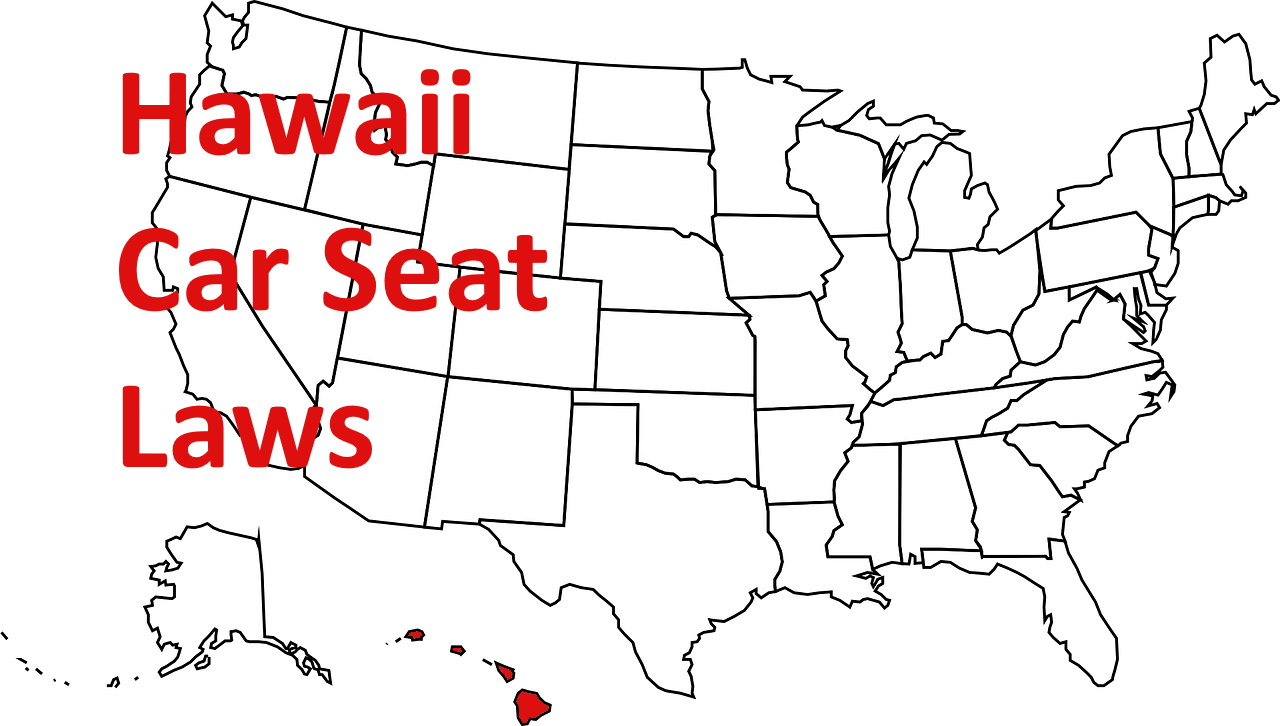Editor’s note: This article was updated in 2022 to link to a more appropriate section of Hawaii’s relevant statute.
In Hawaii law, a child under four years old must be properly restrained in a child passenger restraint system meeting federal motor vehicle safety standards at the time of manufacture, and a child between four and seven years old must be properly restrained in a child safety seat or booster seat meeting federal motor vehicle safety standards at the time of manufacture, when being transported in a motor vehicle on a public highway in the state.
Children Under Four Years Old
A child under four years old must be properly restrained in a child passenger restraint system that meets federal motor vehicle safety standards at the time of its manufacture when being transported in a motor vehicle on a public highway in the state.
Children Between Four and Seven Years Old
A child between four and seven years old must be properly restrained in a child safety seat or booster seat that meets federal motor vehicle safety standards at the time of its manufacture when being transported in a motor vehicle on a public highway in the state.
Penalties for Violations
For a first violation of the child passenger restraint system requirements, you will be fined up to $100.00 and be required to attend a child passenger restraint system safety class not to exceed four hours in length conducted by the division of driver education. The administrator of driver education may teach this class in person or through video conference. The driver must also pay a $50.00 driver education assessment, pay a $10.00 neurotrauma special fund surcharge, and pay up to a $10.00 trauma system special fund surcharge.
For a second violation committed within three years of any other violation, you will be fined between $100.00 and $200.00 and required to attend a child passenger restraint system safety class not to exceed four hours in length conducted by the division of driver education, if you have not previously attended. You must also pay a $50.00 driver education assessment (if you have not previously attended the safety class), pay a $10.00 neurotrauma special fund surcharge, and pay up to a $10.00 trauma system special fund surcharge.
For a third or subsequent offense committed within three years of any other violation, you will be fined between $200.00 and $500.00 and required to attend a child passenger restraint system safety class not to exceed four hours in length conducted by the division of driver education, if you have not previously attended. You will also pay a $50.00 driver education assessment (if you have not previously attended the safety class), pay a $10.00 neurotrauma special fund surcharge, and pay up to a $10.00 trauma system special fund surcharge.
Exemptions
Your child is exempt from proper restraint in a child safety seat or booster seat meeting federal motor vehicle safety standards at the time of manufacture if your child is between four and seven years old, restrained by a seat belt assembly, and: over 4’9” in height; or over forty pounds and traveling in the back seat of a motor vehicle with only lap belts without shoulder straps.
Operators of emergency, commercial, and mass transit vehicles shall be exempted from child passenger restraint system requirements. A “commercial vehicle” is any motor vehicle used to transport people for hire, compensation, or profit.
The child passenger restraint system law shall not apply if the number of people in a motor vehicle exceeds the greater of: the number of seat belt assemblies in the vehicle or the number of seat belt assemblies originally installed in the vehicle; as long as all available seat belt assemblies are being used to restrain passengers; and children not restrained in an approved child passenger restraint system, child safety seat, booster seat, or seat belt assembly are in the back seat.
The Hawaii Department of Transportation‘s website reminds drivers that they can earn a $25 tax credit for purchasing a child passenger restraint system.
FAQ
What is the Hawaii child booster seat law?
Hawaii car seat laws state that drivers must properly secure children between four years old and seven years old must be secured in a booster seat or another appropriate child passenger restraint system when driving on public highways. Children who are taller than 4’9” and weigh more than forty pounds who are riding in the back seat are exempt from this law.
What are Hawaii car seat laws on rear-facing car seats?
Hawaii child car seat laws do not state when a child should transition from a rear-facing car seat to a forward-facing car seat. The law states that children under four years old must ride in a child passenger restraint system that meets federal standards. This car seat must be appropriate for the child’s size. Check your child passenger restraint system’s guidelines on height and weight before securing your child.
When can a child ride in the front seat in Hawaii?
Hawaii car seat law doesn’t stipulate when a child can ride in the front seat. When driving in Hawaii, follow the American Academy of Pediatrics’ recommendations that children under 13 should ride in the back seat.
* Ms. Blake is licensed in the state of Maryland. The information provided in this article does not constitute legal advice and does not create an attorney-client relationship.

